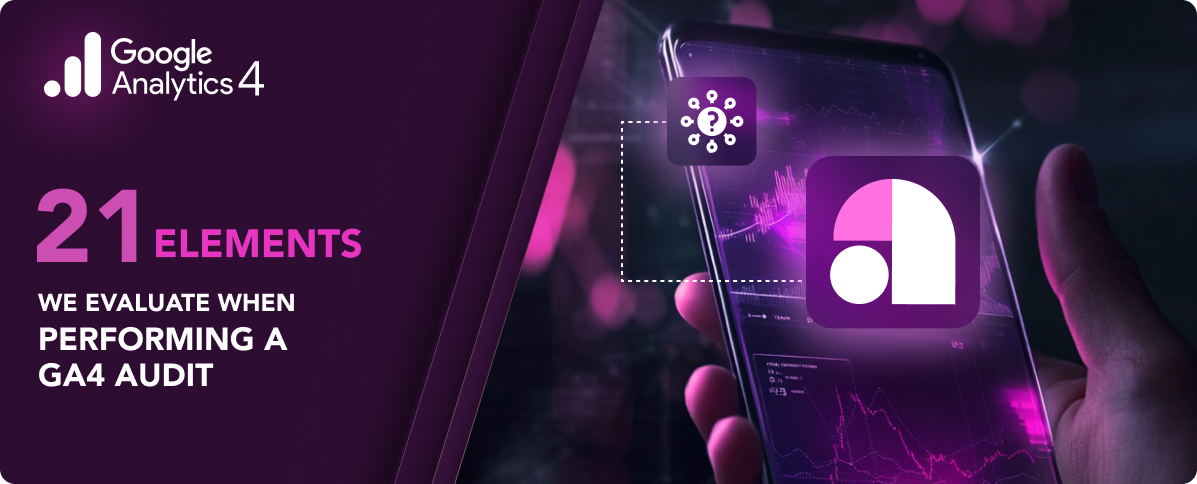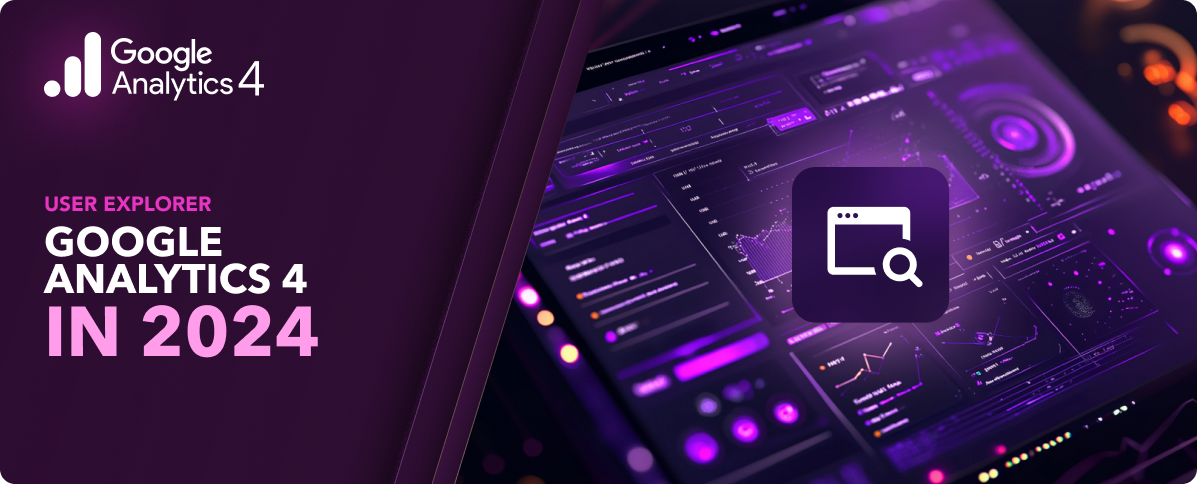Table of Contents
- 1. What is the main problem of cross-platform?
- 2. What are the challenges of cross-platform development?
- 3. What are the limitations of cross-platform?
- 4. What is the downside of cross-platform software?
- 5. What are the disadvantages of cross-platform?
- 6. Why is Visual Studio so heavy?
- 7. Is VS Code heavy?
- 8. Why is VS Code so slow?
- 9. What is Netflix app coded in?
- 10. Is Visual Studio being phased out?
- 11. Is there something better than Visual Studio?
- 12. What is the disadvantage of VS Code?
- 13. Should I use Visual Studio or VS Code?
- 14. What are the disadvantages of Visual Studio?
- 15. What are the cons of Visual Studio?
- 16. Is Xcode better than Visual Studio?
- 17. Is Visual Basic a dead language?
- 18. Will there be a Visual Studio 2024?
- 19. What is the newest Visual Studio?
- 20. Does Flutter have a future?
- 21. Will Google discontinue Flutter?
- 22. Why we stopped using React Native?
- 23. What is replacing React Native?
- 24. Why Facebook stopped using React Native?
1. What is the main problem of cross-platform?
The main problem with cross-platform development is balancing the need to cater to the specific features and performance standards of multiple operating systems while maintaining a single, unified codebase. This can lead to challenges in achieving optimal performance and a native look and feel on each platform.
Cross-platform apps may not fully leverage each platform’s unique capabilities and hardware optimizations, which can result in performance issues, especially in graphics-intensive applications. Additionally, ensuring a consistent user experience across different platforms while respecting their individual design guidelines can be complex. These challenges require careful planning and often a compromise between the efficiency of a shared codebase and the need for platform-specific optimizations.
2. What are the challenges of cross-platform development?
Cross-platform development offers many advantages, but it also comes with its own set of challenges:
- Performance Issues: Cross-platform apps can sometimes suffer from performance issues compared to native apps. This is because they cannot always fully leverage the hardware and software capabilities of each specific platform.
- User Experience Consistency: Maintaining a consistent user experience across different platforms can be difficult. Each platform has its own design guidelines and user expectations, and meeting these consistently in a cross-platform app can be challenging.
- Access to Native Features: Cross-platform frameworks may have limited access to or support for certain native features of devices, such as advanced camera capabilities or specific sensors, which can restrict the app’s functionality.
- Complexity in Code Management: While a single codebase is an advantage, it can also become complex, especially when incorporating platform-specific code or features. Managing these differences within a single codebase requires careful planning and organization.
- Updating with Platform Changes: Keeping up with updates and changes in each platform’s ecosystem (such as new OS versions) can be more challenging in cross-platform development, as changes may affect how an app performs or displays on different devices.
- Tool and Framework Limitations: Cross-platform tools and frameworks are constantly evolving and may have specific limitations or bugs that can impact development. Developers need to stay updated with the latest versions and understand their limitations.
- Testing Overheads: Testing cross-platform apps can be more demanding, as they need to be thoroughly tested on multiple platforms and devices to ensure consistent performance and appearance.
- Marketplace Compliance: Navigating the app submission and approval process for different marketplaces (like Apple’s App Store and the Google Play Store) can be more complex with cross-platform apps due to varying guidelines and requirements.
3. What are the limitations of cross-platform?
Cross-platform development, while efficient and versatile, comes with certain limitations:
- Performance: Cross-platform apps may not always match the performance of native apps, particularly for graphics-intensive applications or those requiring high levels of optimization.
- User Experience: Achieving a native look and feel can be challenging, as cross-platform frameworks may not fully mimic each platform’s unique UI elements and interactions.
- Access to Native Features: There can be constraints in accessing or integrating with all the native features and functionalities of each platform, such as advanced camera capabilities or custom gestures.
- Increased Complexity: Managing a single codebase for multiple platforms can introduce complexity, especially when dealing with platform-specific issues.
- Dependency on Frameworks: You rely on the capabilities and limitations of the chosen framework. If the framework lags in updates or support, it can impact your app.
- Platform Compliance: Ensuring that the app meets the guidelines and requirements of each app store can be more complicated with cross-platform development.
4. What is the downside of cross-platform software?
The downside of cross-platform software is that it might not fully leverage each platform’s specific features and capabilities. While it allows for development across multiple systems with a single codebase, this can compromise the app’s performance, look, and feel on each platform.
For example, a cross-platform app might not run as smoothly or look as native as an app developed specifically for iOS or Android. Accessing certain advanced hardware-specific features or maintaining the app can be more challenging in a cross-platform environment. This approach, while efficient, often requires a balance between universal functionality and platform-specific optimization frameworks. Their choice typically depends on the project needs and developer expertise.
5. What are the disadvantages of cross-platform?
The disadvantages of cross-platform development include:
- Performance: Cross-platform apps might not deliver the same level of performance as native apps, particularly for resource-intensive tasks or complex animations.
- User Experience: Achieving a consistent user experience across different platforms can be challenging. Each platform has its own design norms and usability standards, and meeting these consistently in a cross-platform app can be difficult.
- Access to Native Features: Cross-platform frameworks may have limited access to or support for certain native features of devices, such as advanced camera capabilities or specific sensors, which can restrict the app’s functionality.
- Complexity in Code Management: While a single codebase is an advantage, it can also become complex, especially when incorporating platform-specific code or features. Managing these differences within a single codebase requires careful planning and organization.
- Updating with Platform Changes: Keeping up with updates and changes in each platform’s ecosystem (such as new OS versions) can be more challenging in cross-platform development, as changes may affect how an app performs or displays on different devices.
6. Why is Visual Studio so heavy?
Visual Studio is considered heavy due to its nature as a comprehensive Integrated Development Environment (IDE). It’s packed with various features like advanced debugging, support for multiple programming languages, integrated version control, and various project templates.
Being an all-in-one solution for software development, it includes everything from code editors and compilers to debuggers and design tools.
Its capability to support numerous extensions and add-ons for enhanced functionality contributes to its resource intensity. Visual Studio is also designed to be backward compatible with various platforms and frameworks, adding to its complexity. While making it a powerful tool for professional developers working on complex projects, this extensive feature set also means it demands more system resources like memory and processing power, especially compared to simpler code editors.
7. Is VS Code heavy?
No, Visual Studio Code (VS Code) is not considered heavy, especially when compared to more comprehensive Integrated Development Environments (IDEs) like Visual Studio. VS Code is designed to be a lightweight, fast, and efficient code editor. Its performance and quick startup time are some of its key strengths. It provides essential features like syntax highlighting, code completion, and debugging support while maintaining a minimal footprint.
VS Code’s extensibility through plugins allows users to add only the features they need, which helps in keeping the core application lean. This design choice makes VS Code suitable for developers who prefer a more streamlined tool, and it’s particularly effective for those working on smaller projects or on systems with limited resources.
8. Why is VS Code so slow?
Visual Studio Code (VS Code) is generally known for being a lightweight and fast code editor, but there can be instances where it might run slowly due to various factors:
- Extensions and Plugins: One common reason for slowdowns can be the number and type of extensions installed. Some extensions may consume significant resources or conflict with each other, affecting performance.
- Large Projects: Working with very large files or projects can also impact VS Code’s performance, as it requires more memory and processing power to manage these files.
- System Resources: The performance of VS Code can be affected by the available system resources. On a machine with limited RAM or an older CPU, you might experience slower performance.
- Software Conflicts: Sometimes, other running software on your machine can conflict with VS Code, causing it to run slowly.
- Updates or Bugs: Occasionally, specific updates or bugs in VS Code or its extensions can lead to performance issues. These are usually resolved in subsequent updates.
9. What is Netflix app coded in?
The Netflix app, for its various platforms, is developed using a combination of different programming languages and technologies:
iOS App
For the iOS version of the Netflix app, Swift and Objective-C are commonly used. Swift is Apple’s modern programming language that offers advanced features and improved performance, while Objective-C has been traditionally used for older iOS applications.
Android App
The Android version of the Netflix app is primarily developed using Java and Kotlin. Kotlin, being a more modern language, is increasingly preferred for its concise syntax and safety features.
Web App
For the web version, Netflix likely uses JavaScript, HTML, and CSS. JavaScript frameworks and libraries, such as React (developed by Facebook), might be used for building interactive user interfaces.
Backend Services
For server-side operations, Netflix is known to use a variety of languages and technologies, including Java, Python, and Node.js, depending on the specific service and requirements.
10. Is Visual Studio being phased out?
There is no indication that Microsoft is phasing out Visual Studio. Visual Studio, especially in its more recent iterations like Visual Studio 2019 and Visual Studio 2022, continues to be a key product in Microsoft’s development tools portfolio. It is widely used by professionals and hobbyists alike for various development tasks, including desktop applications, mobile apps, and web applications.
Microsoft regularly updates Visual Studio with new features and improvements, adapting to the evolving needs of developers and the industry. The integration of modern development practices and technologies, such as containerization, cloud development with Azure, and support for various programming languages, further evidences the company’s commitment to the tool.
While Microsoft also offers other development tools like Visual Studio Code, a lighter, more streamlined code editor, these products serve different needs and complement each other rather than one replacing the other. Visual Studio remains a robust, feature-rich Integrated Development Environment (IDE) suitable for complex, large-scale software development projects.
11. Is there something better than Visual Studio?
Whether there’s something better than Visual Studio largely depends on the developer’s or the development team’s specific needs and preferences. Visual Studio is a powerful, feature-rich Integrated Development Environment (IDE) that’s particularly well-suited for .NET and C# development, along with a wide range of other programming languages and frameworks.
However, other IDEs and code editors might be preferred based on certain criteria:
- For Simplicity and Speed: If you’re looking for something lighter and faster, Visual Studio Code is a popular choice. It’s more streamlined than Visual Studio but still offers robust features and extensive extensibility through plugins.
- For Java Development: IntelliJ IDEA is often preferred for Java development, offering a deep understanding of your code, intelligent code completion, and a host of other features tailored to Java.
- For Web Development: WebStorm, also from JetBrains, is tailored for JavaScript and web development, with powerful tools for complex client-side and server-side development.
- For Cross-Platform C/C++: For C and C++ development, especially in a cross-platform context, CLion (another JetBrains product) or Qt Creator are strong choices.
- For Python: PyCharm is widely favored for Python development, offering a range of features like intelligent code completion, debugging, and support for web development frameworks.
12. What is the disadvantage of VS Code?
The primary disadvantage of Visual Studio Code is its performance with very large files or projects. It can become less responsive in these situations, especially on systems with limited resources. This is a key consideration for developers working on large-scale or complex projects.
13. Should I use Visual Studio or VS Code?
Choosing between Visual Studio and Visual Studio Code (VS Code) depends on your specific needs and the nature of your projects:
Use Visual Studio if
- You’re working on large, complex projects, especially in .NET or C#.
- You need a full-featured Integrated Development Environment (IDE) with extensive tools for debugging, testing, UI design, database management, and more.
- You prefer having a lot of functionalities out of the box without needing to install many extensions.
- Your work involves enterprise-level or large-scale software development.
Use VS Code if
- You want a lightweight, fast, and highly customizable editor.
- Your projects are more focused on web development, including JavaScript, TypeScript, or other web technologies.
- You appreciate a streamlined, efficient coding environment with the flexibility to add only the extensions you need.
- You’re working across multiple languages and platforms and value a quick, responsive editing experience.
VS Code is great for quick edits, lighter projects, and when you need speed and flexibility. Being more robust, Visual Studio is suited for larger projects where an extensive array of integrated development tools is beneficial. The choice depends on the complexity of your projects and your preferred workflow.
14. What are the disadvantages of Visual Studio?
Visual Studio, while a powerful Integrated Development Environment (IDE), has some disadvantages that might affect its suitability for certain users or projects:
- Resource Intensive: It can be quite demanding on system resources. Visual Studio often requires a significant amount of memory and processing power, which can slow down performance on less powerful computers.
- Complexity: With its extensive range of features and tools, Visual Studio can be overwhelming, especially for beginners or those who need a simpler, more streamlined coding environment.
- Cost: While there is a free Community version, the Professional and Enterprise versions of Visual Studio come with a cost, which might be a consideration for individual developers or smaller companies.
- Platform-Specific: Primarily designed for Windows development, it might not be the best choice for developers primarily focused on other platforms like macOS or Linux.
- Update Frequency: Regular updates are necessary to keep the software secure and efficient, but they can be large and frequent, potentially disrupting workflow.
15. What are the cons of Visual Studio?
Visual Studio, while a comprehensive and powerful Integrated Development Environment (IDE), does have certain drawbacks:
- Resource-Intensive: It can be heavy on system resources, requiring a significant amount of memory and CPU power, which might affect performance, especially on less powerful machines.
- Complexity: With its vast array of features and tools, Visual Studio can be overwhelming for beginners or for those who prefer a simpler, more streamlined development environment.
- Cost: The Professional and Enterprise editions of Visual Studio are paid, which might be a consideration for individual developers or smaller organizations, although a free Community version is available.
- Primarily Windows-Focused: While it offers some cross-platform capabilities, Visual Studio focuses mainly on Windows development, which might not be ideal for those primarily working on macOS or Linux.
- Frequent Updates: Keeping the software up-to-date is crucial, but the updates can be large and frequent, potentially interrupting development.
16. Is Xcode better than Visual Studio?
Whether Xcode is better than Visual Studio depends on your specific development needs, particularly the platform you are targeting and your preferred programming languages.
For iOS/macOS Development
If you are developing applications for Apple’s ecosystems (iOS, macOS, watchOS, tvOS), Xcode is the better choice. Xcode is Apple’s official IDE for these platforms and provides direct support for Swift and Objective-C, along with necessary tools and simulators.
For Cross-Platform Development
Visual Studio might be more suited to your needs if you’re developing for multiple platforms, including Windows, or using languages like C#, .NET, or C++. It offers broader support for these languages and platforms.
User Interface and Experience
Xcode is optimized for macOS and integrates well with its system, offering a smooth user experience for developers using Macs. Visual Studio, while it has a version for macOS, is primarily a Windows-focused IDE and offers its full range of features mainly on Windows.
Toolsets and Features
Both IDEs offer robust toolsets and features, but their focus differs. Xcode’s tools are tailored to Apple’s platforms, while Visual Studio’s tools are more varied, supporting web development, cloud services, and more.
17. Is Visual Basic a dead language?
Visual Basic (specifically Visual Basic .NET, also known as VB.NET) is not considered a dead language, but its popularity and usage have declined compared to newer programming languages. Microsoft has shifted its focus towards more modern languages like C# for .NET development, influencing the programming community’s preference.
However, Visual Basic .NET continues to be supported by Microsoft, especially in the context of maintaining and updating legacy systems. Visual Basic remains relevant in certain business and educational contexts, particularly where legacy systems are involved or for those starting to learn programming.
While Visual Basic may not be at the forefront of new software development projects, it is still in use, especially in maintaining existing applications, and continues to be a supported language by Microsoft.
18. Will there be a Visual Studio 2024?
As of 2024, there is no official announcement from Microsoft regarding the release of Visual Studio 2024. Microsoft typically releases updates and new versions of Visual Studio regularly, but the specific details and naming of future versions are subject to their development and marketing plans.
For the most accurate and up-to-date information on future releases of Visual Studio, it’s best to refer to official announcements or news releases from Microsoft or the Visual Studio team. They provide updates on upcoming features, enhancements, and new version releases through their official channels.
19. What is the newest Visual Studio?
Visual Studio 2022 Version 17.8.3 is the latest version of Visual Studio. Released by Microsoft, Visual Studio 2022 brought several improvements and new features, including enhanced performance, better productivity tools, and more comprehensive support for modern development practices.
Visual Studio 2022 focused on improved collaboration features, advanced debugging and diagnostics tools, and enhanced cloud, mobile, and game development support. It also marked a significant shift as it was the first version of Visual Studio to offer a 64-bit application, allowing it to handle larger and more complex projects more efficiently.
For the most current information about Visual Studio versions, including any newer releases that may have occurred after April 2023, you would need to check the latest updates from Microsoft or the Visual Studio official website.
20. Does Flutter have a future?
Yes, Flutter has a promising future in the realm of app development. Since its inception, it has gained considerable traction and popularity for several reasons:
- Growing Popularity: Flutter has been rapidly adopted by developers due to its ability to build beautiful, natively compiled applications for mobile, web, and desktop from a single codebase.
- Strong Backing by Google: Google actively develops and supports Flutter, which bodes well for its continuous improvement and longevity.
- Performance and UI Capabilities: Flutter’s performance is comparable to native apps, and it provides a rich set of pre-designed widgets that make it easier to build complex UIs.
- Cross-Platform Development: The ability to write one codebase for multiple platforms without sacrificing performance or quality is highly appealing in today’s diverse device ecosystem.
- Growing Community and Ecosystem: The Flutter community is rapidly growing, contributing to a rich ecosystem of packages and tools, which enhances its functionality and ease of use.
Given these factors, Flutter is well-positioned to continue its growth and play a significant role in the future of app development, both for mobile and beyond.
21. Will Google discontinue Flutter?
There is no indication from Google that they plan to discontinue Flutter. On the contrary, Google has been actively developing and promoting Flutter. Flutter has seen significant adoption and growth since its introduction, and Google continues to invest in its development.
Flutter’s ability to create cross-platform applications with a single codebase for both mobile and web platforms aligns well with current trends in software development. Its growing community, regular updates, and increasing use in the industry suggest that Google is committed to its future.
However, priorities and strategies can shift in the fast-changing world of technology. For the most current information, it’s always best to refer to the latest announcements from Google or the Flutter development team.
22. Why we stopped using React Native?
There can be several reasons why a team or organization might choose to stop using React Native for their mobile app development.
Here are some common considerations:
- Performance Issues: While React Native is efficient for many applications, it might not meet the performance needs of more complex, graphics-intensive apps.
- Native Functionality and Integration: React Native may sometimes fail to fully support intricate native functionalities or integrations specific to iOS or Android.
- Development Complexity: Managing a React Native codebase, especially one with numerous native modules, can become complex and challenging.
- Shift in Project Requirements: Changing project needs or goals might necessitate a move to a different technology that aligns better with the new objectives.
- Team Expertise: A switch might be made if a team is more skilled in other technologies or if there’s a strategic decision to build expertise in a different area, like Kotlin for Android or Swift for iOS.
- Community and Ecosystem Changes: Shifts in the developer community’s preferences or technological ecosystem changes could also influence such a decision.
- Migration to Other Frameworks: The emergence of new frameworks, such as Flutter, which might offer certain advantages over React Native in specific contexts, could be a factor.
The decision to move away from React Native, like any technology choice, depends on various factors, including project needs, team skills, performance requirements, and long-term technology strategy.
23. What is replacing React Native?
React Native wasn’t being replaced by a single technology or framework universally, but several alternatives have gained popularity in specific contexts or for certain use cases:
- Flutter: Developed by Google, Flutter is increasingly popular for cross-platform development. Its use of Dart and focus on high-performance, visually rich apps make it an attractive option for many projects.
- SwiftUI and Kotlin: For purely native development, SwiftUI for iOS and Kotlin for Android are preferred by some developers for their modern features and tight integration with their respective platforms.
- Vue Native and Angular: These are options for developers who prefer to work with Vue.js or Angular frameworks, offering similar advantages to React Native in terms of leveraging web development skills for mobile app development.
24. Why Facebook stopped using React Native?
Facebook decided to stop using React Native for financial and technical reasons. Financially, the company wasn’t seeing a sufficient return on its investment in the React Native project. Technically, they faced several challenges, including performance issues, difficulties in maintaining a consistent codebase across different platforms, limited access to native functionality, and complexities in integrating native modules with React Native. These factors collectively led to Facebook’s decision to wind down its involvement in the React Native project.

















































